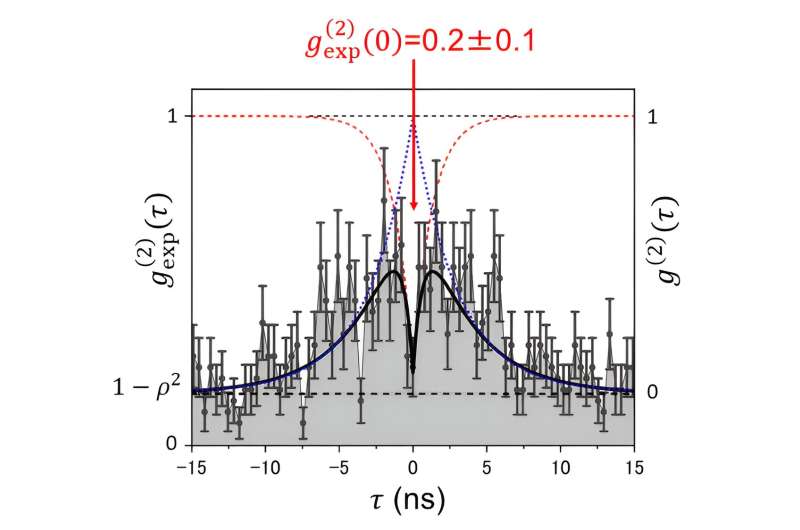Quantum-based systems promise faster computing and stronger encryption for computation and communication systems. These systems can be built on fiber networks involving interconnected nodes which consist of qubits and single-photon generators that create entangled photon pairs.
In this regard, rare-earth (RE) atoms and ions in solid-state materials are highly promising as single-photon generators. These materials are compatible with fiber networks and emit photons across a broad range of wavelengths. Due to their wide spectral range, optical fibers doped with these RE elements could find use in various applications, such as free-space telecommunication, fiber-based telecommunications, quantum random number generation, and high-resolution image analysis. However, so far, single-photon light sources have been developed using RE-doped crystalline materials at cryogenic temperatures, which limits the practical applications of quantum networks based on them.
In a study published in Physical Review Applied on 16 October 2023, a team of researchers from Japan, led by Associate Professor Kaoru Sanaka from Tokyo University of Science (TUS) has successfully developed a single-photon light source consisting of doped ytterbium ions (Yb3+) in an amorphous silica optical fiber at room temperature. This newly developed single-photon light source eliminates the need for expensive cooling systems and has the potential to make quantum networks more cost-effective and accessible.
“Single-photon light sources are devices that control the statistical properties of photons, which represent the smallest energy units of light,” explains Sanaka. “In this study, we have developed a single-photon light source using an optical fiber material doped with optically active RE elements. Our experiments also reveal that such a source can be generated directly from an optical fiber at room temperature.”

Ytterbium is an RE element with favorable optical and electronic properties, making it a suitable candidate for doping the fiber. It has a simple energy-level structure, and ytterbium ion in its excited state has a long fluorescence lifetime of around one millisecond.
To fabricate the ytterbium-doped optical fiber, the researchers tapered a commercially available ytterbium-doped fiber using a heat-and-pull technique, where a section of the fiber is heated and then pulled with tension to gradually reduce its diameter.
Within the tapered fiber, individual RE atoms emit photons when excited with a laser. The separation between these RE atoms plays a crucial role in defining the fiber’s optical properties. For instance, if the average separation between the individual RE atoms exceeds the optical diffraction limit, which is determined by the wavelength of the emitted photons, the emitted light from these atoms appears as though it is coming from clusters rather than distinct individual sources.
To confirm the nature of these emitted photons, the researchers employed an analytical method known as autocorrelation, which assesses the similarity between a signal and its delayed version. By analyzing the emitted photon pattern using autocorrelation, the researchers observed non-resonant emissions and further obtained evidence of photon emission from the single ytterbium ion in the doped filter.
While quality and quantity of emitted photons can be enhanced further, the developed optical fiber with ytterbium atoms can be manufactured without the need for expensive cooling systems. This overcomes a significant hurdle and opens doors to various next-generation quantum information technologies.
“We have demonstrated a low-cost single-photon light source with selectable wavelength and without the need for a cooling system. Going ahead, it can enable various next-generation quantum information technologies such as true random number generators, quantum communication, quantum logic operations, and high-resolution image analysis beyond the diffraction limit,” concludes Dr. Sanaka.
More information:
Mikio Takezawa et al, Room-temperature addressing of single rare-earth atoms in optical fiber, Physical Review Applied (2023). DOI: 10.1103/PhysRevApplied.20.044038
Citation:
Optical fiber–based, single-photon light source at room temperature for next-generation quantum processing (2023, November 2)
retrieved 3 November 2023
from
This document is subject to copyright. Apart from any fair dealing for the purpose of private study or research, no
part may be reproduced without the written permission. The content is provided for information purposes only.

